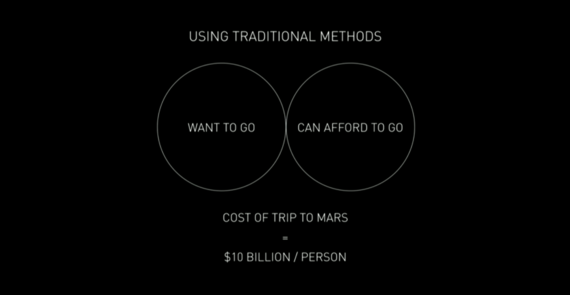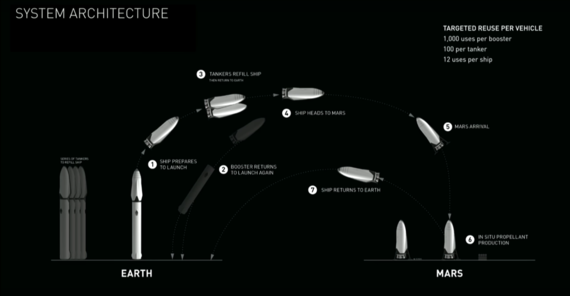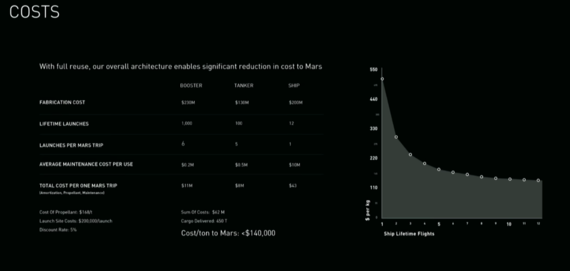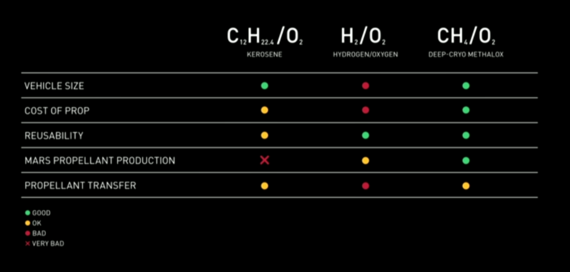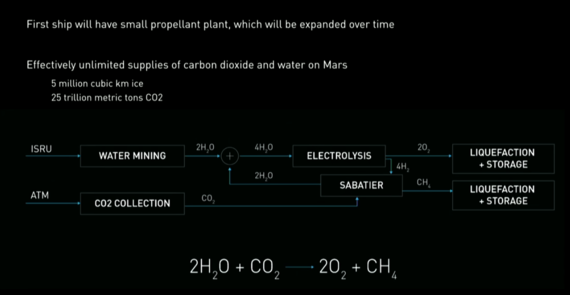What technological breakthroughs are still needed to make Elon Musk's vision for Mars travel possible? originally appeared on Quora - the knowledge sharing network where compelling questions are answered by people with unique insights.
Answer by Josh Boehm, former SpaceX employee, co-founder of cyph.com, on Quora:
We have the technology to send men to Mars. The bottleneck at the moment is the cost, which stems from a few issues mainly related to reusability and fueling.
These graphics from Elon's presentation do a pretty good job of illustrating the problem:
Venn diagram of people who want to go to Mars and those who can afford to based on traditional methods. Source: SpaceX
The same venn diagram updated to show where the price point needs to be. Source: SpaceX
- Get the cost down to that of the median cost of a home in the U.S.
- Full rocket reusability: no transportation method would be affordable if you threw out the vehicle at the end of the journey.
- Fueling:
- Using the right propellent (one that is cost effective and can be easily produced on Mars)
- Refueling in orbit
- Manufacturing a propellant plant on Mars.
- This is where the "technological breakthroughs" need to be. SpaceX is the only company making considerable efforts and progress towards rocket reusability with their many successful F9R landings. They've come a long way, but there is still a long way to go.
- Currently, only the first stage of the rocket is partially reusable. It would still need to be refurbished before flight as is, not just refueled and launched. The second stage isn't recoverable at this point.
- Rockets and spacecraft take an enormous amount of stress in flight. Even when they're reusable, components will have different projected lifetimes. The targeted number of reuses per vehicle are 1000 for the booster, 100 for the tanker, and 12 for the ship itself.
Overall architecture of the Mars mission with targeted reusability stats for each vehicle. Source: SpaceX
Projected costs of Mars transport over time. Source: SpaceX
The initial flights will be expensive, but the more you can reuse a vehicle, naturally the average flight cost gets cheaper.
- No "technological breakthroughs" are really needed here. Everything has been done in some fashion before.
- Since there's only a launch window to Mars about once every 2 years, the colonial fleets will be assembled, fueled, and loaded in orbit, à la Battlestar Galactica. (See the "System Architecture" graphic under "Notes on reusability.") This is much more efficient than trying to do one large rocket launch anyway. Not refueling in orbit would require a 3 stage vehicle at 5-10x the size and cost. With the context of the 2 year window, a projection of 12 uses per ship is much more reasonable.
Chart comparing the options for propellent for the Mars mission. Source: SpaceX
- As demonstrated by the chart, deep-cryo methalox (CH₄/O₂), is the most viable option, due to the energy density, cost, and ability to produce it easily on Mars.
- Water (in the form of ice) and CO₂ are abundant on Mars, which allows us to fairly easily produce methane and oxygen.
Synthesizing oxygen and methane from water and carbon dioxide on Mars. Source: SpaceX
Disclaimer: I am a former SpaceX employee, representing my own opinion. Nothing I've written should be interpreted as a statement from SpaceX. For an official statement please contact the SpaceX Press Center.
This question originally appeared on Quora - the knowledge sharing network where compelling questions are answered by people with unique insights. You can follow Quora on Twitter, Facebook, and Google+.

